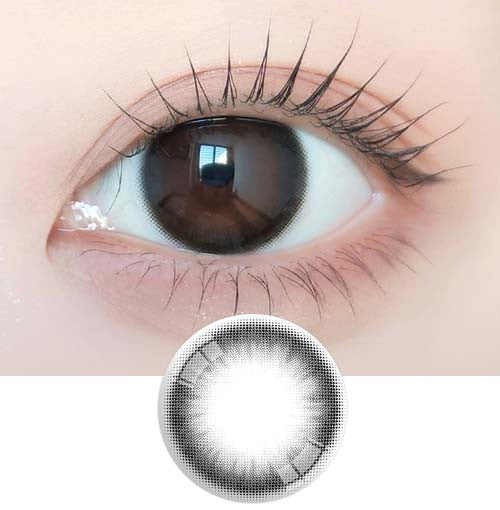👁️ A Complete Guide to Modern Eye Surgery: Procedures, Benefits, Costs & Recovery
•Posted on April 25 2025
Eye surgery is rarely anyone’s idea of a relaxing day—but the right procedure can dramatically improve vision, safeguard eye health, and, in some cases, enhance appearance. From ten-minute outpatient treatments to complex operations that require sophisticated technology, today’s ophthalmology toolkit is broader than ever.
What Counts as Eye Surgery?
The term eye surgery (also called ophthalmic or ocular surgery) refers to any operative technique performed on a part or parts of your eye, or on the surrounding structures. Most procedures are carried out by ophthalmologists, although certain cosmetic operations may be handled by specialists in oculoplastic or facial plastic surgery. The vast majority take place on an outpatient basis in clinics, ambulatory centers, or hospitals, allowing patients to return home the same day.
Depending on the operation, you may receive numbing drops, local anesthesia, or—in more involved cases—general anesthesia. Many people remain awake but comfortable throughout. While some interventions are over in ten minutes, total chair-time (prep, surgery, brief recovery) often runs two to three hours.
Why Do People Choose Eye Surgery?
Patients turn to surgical solutions for a variety of reasons, typically falling into one or more of these categories:
| Primary Goal | Typical Examples |
|---|---|
| Improve vision | Correct refractive errors, remove cataracts, lift drooping lids that block sight |
| Treat disease | Your ophthalmologist may recommend surgery to treat an eye disorder or disease such as glaucoma, retinal damage, corneal scarring, or persistent infections. |
| Prevent future vision loss | If a potentially sight-threatening condition is identified, surgical intervention may help slow its progression. Even in cases where some vision loss has already occurred, certain procedures can help prevent further decline. |
| Repair injuries | Close open-globe wounds, fix traumatic lens or corneal damage |
| Enhance appearance | Eyelid reshaping, scar revision, cosmetic lens implantation |
Common Categories of Eye Surgery
Ophthalmologists offer a broad spectrum of surgical solutions—from quick outpatient laser corrections to intricate procedures on the retina. Below is an overview of the most frequently performed eye operations and the conditions each one is meant to address.
Artificial Lens Procedures (Cataract & Lens Replacement)
Replacing the eye’s crystalline lens with an artificial one is a fast, minimally invasive way to restore clarity when cataracts develop or when severe refractive errors cannot be managed with laser surgery.
Cataract Removal Surgery
Cataract surgery is performed more often than any other operation worldwide. Age-related protein changes make the once-clear lens opaque, leaving vision blurred or dulled. During the operation, the cloudy lens is removed and a transparent intra-ocular lens (IOL) is implanted in its place, immediately sharpening sight.
Clear Lens Exchange (Refractive Lens Exchange, RLE)
RLE mirrors cataract surgery in technique but is chosen purely for vision correction. By swapping the natural lens for a custom IOL, surgeons correct high myopia, hyperopia, or presbyopia in patients who are poor candidates for LASIK or other corneal procedures.
Laser & Implant-Based Vision Correction Options
“Vision correction surgery” covers several techniques that treat myopia, hyperopia, astigmatism, and, in some cases, presbyopia.
- LASIK (Laser-Assisted In Situ Keratomileusis) – A corneal flap is created, stromal tissue is sculpted with an excimer laser, and the flap is repositioned. Monovision LASIK adjusts one eye for distance and the other for near tasks.
- PRK (Photorefractive Keratectomy) – The corneal epithelium is removed, then the underlying tissue is reshaped with a laser. The surface regenerates within days, making PRK ideal for thin corneas or very high prescriptions.
- LASEK (Laser Sub-Epithelial Keratomileusis) – Combines elements of LASIK and PRK; the epithelial layer is preserved as a sheet, then replaced after laser sculpting.
- SMILE (Small-Incision Lenticule Extraction) – A femtosecond laser extracts a lenticule of stromal tissue through a micro-incision, reducing dry-eye risk and suiting higher myopia or astigmatism.
- Phakic IOL Implantation – A synthetic lens is inserted in front of the natural lens, leaving the crystalline lens intact. It is reserved for extreme prescriptions or corneas unsuited to laser reshaping.
Eye-Alignment Surgery (Strabismus Repair)
Strabismus occurs when ocular muscles pull the eyes in different directions, causing misalignment. Surgery shortens or repositions selected muscles so both eyes point at the same target. Performed under general or local anesthesia, the outpatient procedure lasts 30 – 120 minutes and is common in children when glasses, prisms, or exercises fail.
Pressure-Lowering Operations for Glaucoma
Glaucoma gradually damages the optic nerve, often because intra-ocular pressure (IOP) rises as fluid builds up inside the eye. Although lost sight cannot be restored, surgery can improve drainage, slow progression, and protect remaining vision.
- MIGS (Minimally Invasive Glaucoma Surgery) – Tiny stents or channels created via micro-incisions enhance outflow with minimal tissue disruption.
- Trabeculectomy – A guarded fistula is fashioned under the sclera, allowing aqueous fluid to bypass normal pathways and exit beneath a filtering bleb.
- Aqueous Shunt / Tube Implant – A silicone tube diverts fluid to an external plate where it is absorbed, stabilizing pressure in advanced or refractory cases.
Emergency Repairs for Ocular Trauma
Severe injuries such as an open-globe wound—a puncture or laceration of cornea or sclera—require immediate surgical closure, usually with microsurgical sutures. Prompt repair preserves eye integrity and minimizes infection or vision loss.
Retinal Operations
The retina converts light to nerve signals; tears or disease threaten permanent blindness. Common surgical solutions include:
- Laser Photocoagulation – Targeted burns seal small retinal breaks or leaking vessels and may slow age-related macular degeneration (AMD).
- Vitrectomy – Removal of part or all of the vitreous gel gives surgeons access to repair detachments
- Scleral Buckling – A flexible silicone band is sutured to the sclera, indenting the wall and pushing the detached retina back into position.
Corneal Transplantation (Keratoplasty)
When scarring, infection, or keratoconus warps the cornea beyond repair, diseased tissue is excised and donor cornea grafted in its place. Full-thickness (PK), partial-thickness (DALK), or endothelial-only (DMEK/DSEK) techniques are chosen case-by-case.
Enucleation (Complete Eye Removal)
In rare circumstances—malignant tumors, uncontrollable pain, or catastrophic trauma—the entire globe is surgically removed. A porous implant plus an external prosthetic eye restores appearance, though vision is lost in that eye.
Eyelid Reshaping (Blepharoplasty)
Excess upper-lid skin can block side vision, while under-lid bags may cause cosmetic concern. Blepharoplasty excises redundant skin or fat, tightens supporting structures, and often widens the visual field. Ophthalmic or facial plastic surgeons typically perform this outpatient procedure.
Eye-Surgery Pricing: What to Expect
The price tag for an eye procedure can swing widely because there are dozens of operations, each with its own level of complexity and equipment requirements. Location, the surgeon’s experience, and even the technology a clinic uses (blade vs all-laser, premium IOLs, etc.) all affect the final bill.
Most vision-enhancement procedures are classed as elective—insurers are not obliged to pay. Even medically necessary surgery (for example, retinal repair after a tear) may be covered only in part. Before booking, confirm benefits with your health-plan administrator, and ask whether HSA or FSA funds can be applied.
Typical U.S. Price Ranges
| Procedure | Approximate Cost* |
|---|---|
| LASIK | $1,500 – $3,000 per eye |
| Cataract removal (standard monofocal IOL) | $1,900 – $2,500 |
| Strabismus (eye-muscle) repair | $3,100 – $6,800 |
| Glaucoma surgery | $425 – $7,400 |
| Retina surgery (e.g., vitrectomy) | $3,900 – $6,200 |
| Upper-/lower-lid blepharoplasty | $3,400 – $3,900 |
*Figures are national averages; metropolitan centers and premium lens upgrades can push fees higher.
Getting Ready for Surgery
Surgeons issue detailed instructions, but most patients are asked to:
- Fast for the number of hours your doctor specifies.
- Pause certain medications (blood thinners, for example) if advised.
- Arrive freshly showered with no makeup, fragrance, or lotion; remove lash extensions.
- Arrange transportation home—vision is usually hazy and sedation can linger.
Recovery Basics
Healing time and discomfort vary by procedure, yet the following points apply to many eye surgeries:
- Expect temporary redness, swelling, or mild soreness.
- Your surgeon may place a shield or patch over the treated eye.
- Use prescribed drops or oral medication exactly as directed.
- Some operations require keeping the head in a specific position (e.g., face-down after certain retinal repairs).
- Vision can be blurred for hours to days; avoid driving until cleared.
- Limit strenuous activity, heavy lifting, and dusty environments until follow-up.
Most patients return for a check-up within a week; some need several visits over a month or two. Closely following the post-op plan is the quickest route to clear, comfortable vision.




